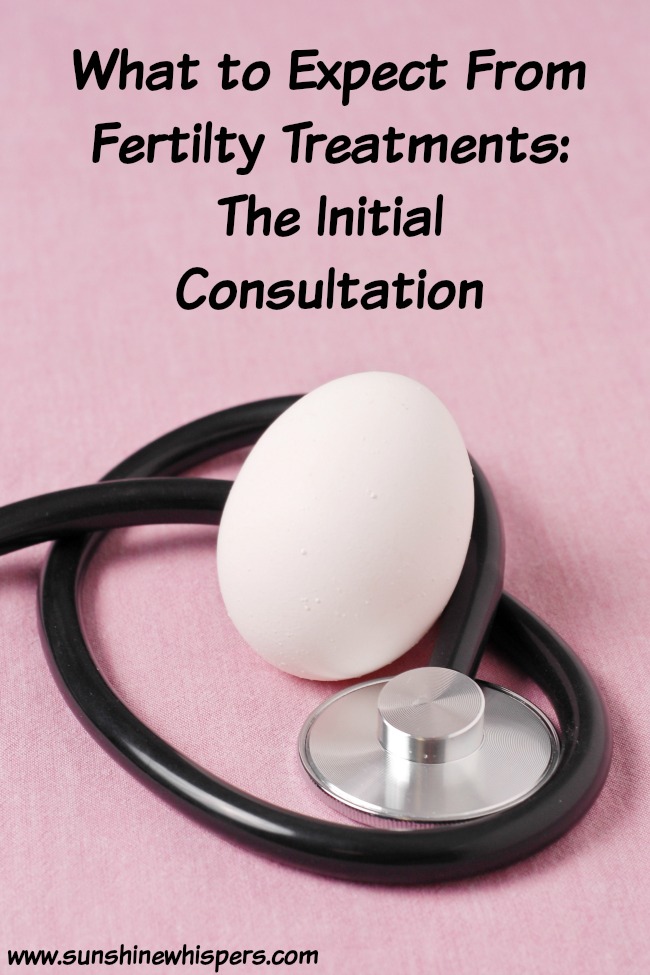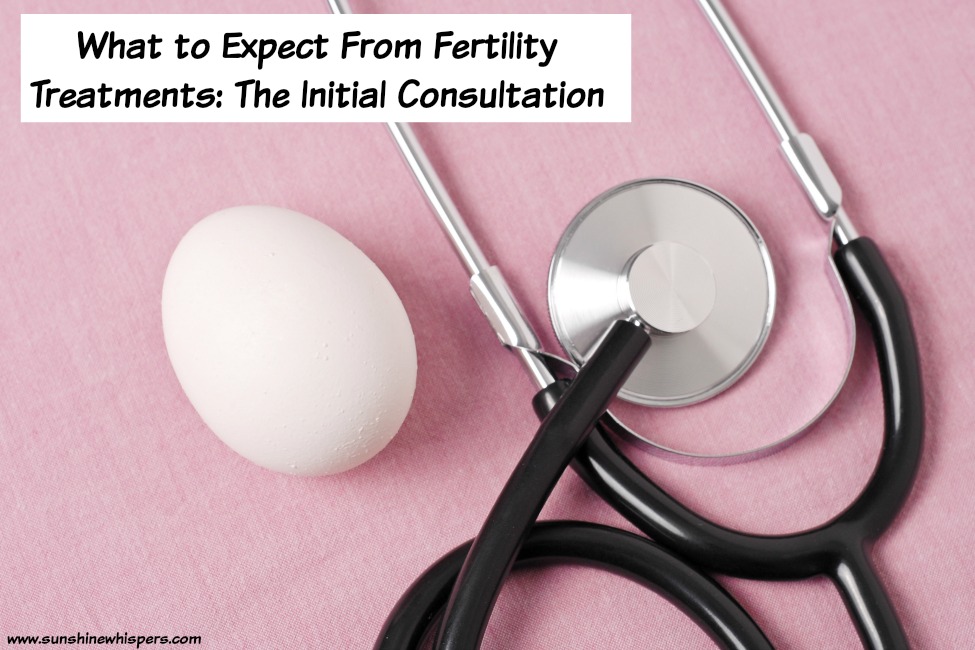What to Expect From Fertility Treatments: The Initial Consultation
Are you considering treatment at a fertility clinic? Are you unsure of what to expect from fertility treatments? Many women who suffer from infertility will seek out the assistance of a fertility clinic. However, that process can be overwhelming and a little scary, especially if you are already stressed out and emotional about your inability to conceive. If you are thinking about seeking treatment from a fertility center, I want you to know that you are not alone. Many, many women have passed through the doors of clinics around the world. I also want to encourage you not to lose hope. There are many treatments available from fertility clinics and centers. I spent over a year receiving treatment and eventually conceived with Intrauterine Insemination (IUI).
My experience was that all of the medical professionals at the fertility clinic I encountered really cared about helping me conceive. My experience was that to a person, I felt supported throughout the entire process. Over the next few weeks I want to share our (because my husband was involved too) experience with you. Each week I will focus on a different aspect of treatment, from the initial consultation and testing, to the monitoring phase, and finally Intrauterine Insemination (IUI). If you are suffering from infertility, I hope this series will provide information you need to help you make an informed decision about whether or not fertility treatments are right for you.

What to Expect from Fertility Treatments: The Initial Consultation and Workup
There are many reasons why you might seek the assistance of a fertility clinic. Human anatomy is very complex. I was referred to the Shady Grove Fertility Center by my OBGYN after I had both unsuccessfully tried to conceive for over a year and suffered two early miscarriages.
Initial Consultation
When my husband and I arrived for our initial consultation, I had a pretty good idea that the reason I was infertile was due to polycystic ovarian syndrome (PCOS). However, that diagnosis had not been confirmed. Upon arriving at the clinic we first met with the reproductive endocrinologist, who would eventually design a fertility treatment plan specifically tailored to our needs as a couple. Reproductive endocrinology is a fascinating sub-specialty of the already specialized field of endocrinology. Reproductive endocrinologists basically take a hard look at what your hormones are doing, compare that data to what your reproductive system is doing, and then make fertility treatment decisions. There is no standard operating procedure. The treatments will vary by person and are tweaked each month according to the way your body responds.
It was very comforting to meet with the reproductive endocrinologist. During our first consultation, she gave us a brief overview of the process, explained the initial workup requirements, and answered any questions or concerns we might have. We then met with the nurse to receive our lab slips and, finally, we met with the financial advisor, who helped us wade through the crazy insurance claim process so that we made the best financial decisions and understood the costs of each treatment option.
The Cost– Yikes!
I don’t want to sugar coat this next part– fertility treatments can be quite expensive. Each insurance company has its own threshold. We were fortunate enough to have insurance that paid 50% of all our costs, except for medicine. For us, that meant each monitoring appointment cost about $120 and the entire IUI process/procedure would cost about $3500 (for one IUI round). IUI is one of the least expensive treatment options. Ouch! That is a lot of money, right?
So, how did we justify the cost?
Well, really it was easy. I just needed to answer one question– how could I put a price tag on the privilege of becoming a Mommy? I would have paid almost anything to be able to conceive. Honestly though, that is a hard question you need to ask yourself and your family. Many couples decide at this point to go through the adoption process instead. However, you need to know that the adoption process is not without significant cost either.
Blood Work and ‘Other’ Testing
We left the initial consultation with lab slips to get a significant amount of bloodwork done (for both of us) and an appointment to undergo an HSG (Hysterosalpingogram) test. The bloodwork was pretty standard, except that the lab took what seemed like 15 vials of blood from me (my husband only had about 4 taken from him). They literally tested for everything under the sun.. including STDs. I only mention that because both you and the father of your baby will have to get tested for infectious diseases (like STDs). It isn’t personal… insurance requires it. So, don’t be alarmed. Additionally, you have the option to receive genetic testing. Some genetic disorders are routinely tested through your primary OBGYN. There are advanced genetic tests available though. We opted out of this testing because a) it is quite expensive and b) it would not have deterred us from trying to conceive. In addition to the blood work, my husband also had to produce a ‘sample’ of his sperm so that the andrology specialist could test it to determine if he contributed in any way to our fertility issues.. he didn’t.

The HSG
The other significant step in the ‘workup’ process was the HSG. The HSG is essentially a pap smear that is both more invasive and can be a lot more painful. The purpose of the HSG is to examine the walls of the uterus and the fallopian tubes and ensure there are no blockages. The test is performed in a radiology lab and typically lasts between 10 to 30 minutes. The technician performing the HSG will squirt dye through a plastic tube into your uterus and fallopian tubes. Then an x-ray will be performed to check for anything abnormal. The guidelines say that you might experience some cramping and you are advised to have someone else drive you to/from the appointment. For most women this will actually be a relatively painless procedure.
Second Consultation
After the initial workup and test results were in, we met with the reproductive endocrinologist again to discuss specific treatment options and our comfort level. It was at this second consultation that it was confirmed I suffered from PCOS. Our doctor looked me in the eye and informed me that I did nothing wrong. She assured me that PCOS was hereditary and that even though it can lead to some pretty unsavory medical conditions (infertility being one), I was not to blame for this disorder. The good news was that she was an expert at helping women with PCOS conceive babies. Awesome!
We left the second consultation with a pretty good idea of the treatment plan for the next month and instructions to call my assigned nurse the first day of my next menstrual cycle so that treatment and monitoring could begin!
The initial phase of the fertility treatment process was not bad at all. It look less than a month to complete everything, and the longest part of that process was waiting to start my cycle.
Join me next week to learn what is involved in the monitoring phases of the fertility treatment process.



Thank you for a walk through the fertility process. I would have had no idea of its complexity without your basic information/description. Certainly, this information makes me more sensitive to others who are faced with this physical situation.